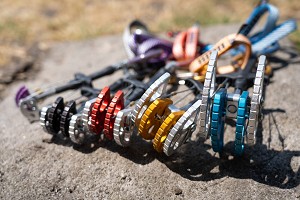
Micro cams are one of the most specialist - and among the most crucial - pieces of gear on a trad climber's rack. Having a tiny cam you can rely on to protect otherwise unprotectable sections of rock can make the difference between arriving at the top of your route... or at the bottom. However their tiny size makes them extra sensitive to the vagaries of camming devices - holding power, walking and deformation. As such you want the best quality you can get: in this test we take a look at some of the main micro camming devices currently available on the market.
So, what exactly is it that we're looking for in a micro cam? If you could create your own perfect cam in the forge of Mt. Olympus, what would it look like?
Sizes and Widths
The purpose of a micro cam is to provide protection in small placements, so it's essential that the device goes small enough to fit thin cracks. A secondary, but important, consideration is head width. A cam with a smaller head width can fit in to narrower and more awkward placements than a wider cam, thereby opening more protection possibilities.
It's also important to have a range of overlapping sizes in the 'micro' department: if there's only two sizes beneath the regular sized cams then you won't have many micros to protect that route with only small placements.
It's worth defining what we've considered to be 'micro' cams in this review.
Most regular cam ranges - think the DMM Dragons, Black Diamond Camalots or Wild Country Friends - start with a smallest size range of roughly 14mm - 22mm (BD 13.8-23.4mm, DMM 14-21mm, WC 15.8-26.3mm). Anything under this size will be considered a true micro cam, and it's these we're most interested in here. That said, each of the micro cam ranges in this review features models above this size, thus overlapping with the brand's range of regular cams. We'll also look at these and their qualities.
Unfortunately the different brands use different names to denote similar size ranges of cams. As such, we've taken the decision to compare all the units in this group test to the DMM Dragon sizes, where relevant. This allows us to provide a consistent comparison to a single size of cams. This is cleaner and more useful, as comparing each brand's microcams with their own regular cams would require you to then compare each brand's regular cams to determine which sizes of micro cams overlap with which. The smallest cam in the Dragon range is the blue 00, and for our purposes anything smaller than this can be considered a micro cam.
If you'd like to go straight to a comparison of the sizes of all the cams in this review just click here.
Flexibility
Micro cams are small. Their lobes are small, meaning they have less surface area in contact with the rock. As such, when they're tugged by the rope on a wandering route, they're susceptible to walking - more so than a regular cam. This means that it's important for the stem of a micro cam to be flexible so that the sideways pull on the rope does not move the lobes, thereby compromising the placement. In general, the stems of more modern cams are more flexible, and some now also include an extendable sling as part of the unit.

Strength and Holding Power
A micro cam is only useful insofar as it can protect you. As well as the purely practical nature of this consideration, there is also a psychological one: if you know that the piece of gear is technically strong enough to hold your fall, you will feel much more confident in it than if not, and given that the vast majority of trad gear placements are not fallen on, the confidence-inspiring ability of a micro cam is often very important.
We can distinguish between the strength of the micro cam (the x kN rating it's given) and the ability of the lobes to hold on to the rock when under tension. The latter is affected by the surface of the lobes (and the friction of the rock, but we're not reviewing that!) which in turn is determined by the type of alloy used in the lobes and the features of the surface (e.g smooth, ridged).
To give you an example of the forces typically generated in a climbing fall, and therefore the strength ratings you may want to look out for in your cams, here's a quote from the BMC's Technical Officer, Dan Middleton:
"Most falls will generate a force in the range of 3-5kN... A particularly hard fall may generate up to 6-7kN"
Weight, durability and other features
Being tiny things, micro cams naturally don't weigh much, but it's always worth considering the weight of each piece of your trad gear. When you're carrying a double set of nuts, a set of cams, a set of quickdraws and a set of micro cams it all adds up.
Again, being tiny, durability can often be an issue for micro cams. Whilst it's important for a micro cam to be flexible, you don't want it to bend out of shape and become difficult to place, and you don't want the tiny lobes and trigger wires to be easily damaged or dented.
A final thing worth considering is how easily the lobes retract and spring back. You'll sometimes hear this referred to as the 'action' of the cam. Is it smooth and slick or is it grindy and an effort? Not only is a cam with a smooth action more pleasant to use, it also often correlates with the individual lobes moving in unison, making the cam easier to place. In addition, the cam's springs help to keep the lobes locked in to a placement, so if the springs on a cam aren't working smoothly this may result in the cam walking more than usual.
DMM Dragonfly - RRP £67-£68
The Dragonflys (flies?) are an excellent set of micro cams which cover all the placement sizes you could ask for and offer the benefits of a narrow headwidth, extremely flexible stem and extendable sling. The placement sizes also overlap nicely with the DMM Dragons, which is great if you're double-racking cams. DMM's long-anticipated entry into the micro cam market was worth the wait!
Size and widths
| Size | Range (mm) | Head Width (mm) | Strength | Weight |
|---|---|---|---|---|
| 1 Green | 7.8-11 | 34 | 6kN | 55g |
| 2 Red | 8.7-12.9 | 34 | 6kN | 56g |
| 3 Gold | 10.2-15.2 | 36 | 8kN | 65g |
| 4 Blue | 12.1-17.9 | 36 | 8kN | 67g |
| 5 Silver | 15.1-22.5 | 36 | 9kN | 70g |
| 6 Purple | 19-28.3 | 37 | 9kN | 73g |
The Dragonfly comes in six sizes, and overlaps in the upper end of the range with the standard Dragon cam:
- 4 Blue (12.1-17.9mm, 8kN, 67g) overlaps with the regular blue 00 Dragon (14-21mm)
- 5 Silver (15.1-22.5mm, 9kN, 70g) overlapping with silver 0 Dragon (16-25mm)
- 6 Purple (19-28.3mm, 9kN, 73g) overlaps with purple 1 Dragon (20-33mm)
In terms of the available sizes this is everything we could want from a range of micro cams. The Green Dragonfly is incredibly small, beaten slightly only by the smallest Black Diamond Z4. With the Red and Gold too you've got three options smaller than your regular set of Dragons. At the larger end, Blue, Silver Purple overlap with smaller Dragons, so with the full range of six you're really well covered.
In terms of sizing, one of the most notable features of the Dragonfly is its narrow head width*. A narrow head is great because it increases a cam's range of placement sizes - a cam with a narrow head can fit into a narrow placement, such as in a pocket, seam or thin break. In general, we've found with cams that the narrower the head width the better - you can fit them in more places and they're therefore way more valuable. We'd always choose a narrow-headed cam over one with a wider head (we imagine there are some strength/manufacturing concerns here which mean there is a limit to how narrow you can go).
Whilst you would expect a micro cam to have a narrow head, the Dragonfly sizes which overlap the regular Dragon also benefit from a narrow head width and this is a welcome addition: it means that they are not only beneficial because their sizes overlap the regular Dragons and therefore offer additional placement options, but also because they are much narrower, again differentiating the placements which the two cams fit. As such carrying the Blue, Silver and Purple Dragonflys in addition to the Blue, Silver and Purple Dragons is a serious consideration. Nevertheless, some other models in this review have narrower heads than the Dragonfly.
*The blue Dragonfly is actually smaller than the 00 Dragon (only at full contraction of the Dragon and minimum contraction of the Dragonfly do they overlap!) and the headwidth is roughly 20% smaller.
Flexibility
The Dragonflys score pretty highly here as their stems are extremely flexible; in fact they seem even bendier than Totem cams which don't actually have a proper stem.
In addition, they have the classic Dragon extendable slings which mean you have to carry fewer quickdraws on your rack, though they are a little bit faffy on such a small cam. The flexible stem and extendable sling are both brilliant because they prevent your cams from walking, an issue to which micro cams are particularly prone, but it can make them more difficult for your second to remove as it's sometimes hard to move the lobes using the stem.
Strength and Holding power
The Dragonflys have the same camming angle of 13.75° as the Dragons, which, say DMM, provides "the optimum balance of holding power and range".
Anecdotally they hold well in a variety of rock types. We haven't fallen onto a Dragonfly in isolation, but we have fallen on clusters of gear which included Dragonflys and they've held fine. They also seem solid when you place and then tug them - we think this is the industry standard test for safety; it's certainly the most that UKC would demand of its reviewers.
Jokes aside, giving a cam a good rattling around once you've placed it is often illuminating in showing how well the cam's lobes grip that particular rock type and how much the lobes move when the the cam's stem is dragged side to side (as it could be in case of rope drag).
They also seem to grip the rock fairly well thanks to their TripleGrip lobes. These haven't got the same rock-grabbing teeth as the Dragons, but DMM say that their raw aluminium surface increases friction, meaning that the cam is more likely to hold on smooth rock types. In terms of grippiness it's interesting to compare the lobes of Dragonfly and Totem Basic micro cams. Anecdotally, the lobes of the Totems do seem to have a more malleable surface which bites into the rock, and going on feel alone this might lead us to choose them over the Dragonflys for crucial placements which lack friction. However, on paper there's no difference. The Dragonflys use 6082 alloy in their lobes and the Totems use 6061. These two alloys are the same hardness and so the perceptible difference in the lobes, which may or may not lead to a practical difference, can't be explained by a difference in hardness. 6082 alloy does have a slight advantage over 6061 in that it has increased corrosion resistance.
In terms of the Dragonfly's rated active strength, they range from 6kN in the smallest two sizes to 9kN in the largest two (see the bullet points above). I'm not qualified to give any proper advice on safety ratings of climbing equipment, but 6kN is at the acceptable end of the spectrum and seems very good for the very small Green cam, whilst 9kN feels comfortable and is the same as a 00 Dragon.
Weight, durability and other features
Having used the Dragonflys for over a year now they are doing pretty well. The lobes are still in good condition with no notches or worn patches but there is some deformation and twisting going on with the smallest cams. This could be expect for extremely small and light cams, and they're certainly still usable without any detriment to performance.
With the smallest Dragonfly weighing 55g and the largest 73g, and a total combined weight of 386g for the full set, the Dragonflys aren't going to be weighing you down!
The other notable feature of the Dragonflys are their extendable slings which reduce the amount of quickdraws you need to take, and help prevent the cam walking when the sling is deployed. They're a matter of personal preference but most climbers seem to be a fan.
Wild Country Zero Friends - RRP £70
Wild Country Zeros offer an excellent set of micro cams which have the second narrowest headwidth in this test, although in terms of range they don't go quite as small as the Dragonflys or Z4s. What makes the Zeros really stand out is that, in their larger sizes, they make for a brilliant second set of cams for double-racking. The narrow head width of the Green and Purple sizes in particular is exceptional as it opens up so many placement options and so, if you're going to be carrying two sets of cams on a route, the Zeros are an obvious choice.
Size and widths
The Zeros come in six sizes:
| Size | Range (mm) | Head Width (mm) | Strength | Weight |
|---|---|---|---|---|
| 0.1 Red | 8.5-13.2 | 31 | 5kN | 51g |
| 0.2 Yellow | 10.4-15.7 | 32 | 6kN | 58g |
| 0.3 Blue | 13.8-22.3 | 34 | 8kN | 67g |
| 0.4 Silver | 15.8-25.9 | 34 | 9kN | 71g |
| 0.5 Purple | 20-32.9 | 34 | 9kN | 77g |
| 0.75 Green | 25.4-40.1 | 34 | 9kN | 83g |
The sizing of the Zeros is notable for two reasons. Firstly, there are only two sizes below regular cam sizes - the red and the yellow - and so compared to the DMM Dragonflys and Black Diamond Z4s you have one less true micro cam on your rack.
Secondly, and this is something we have been really impressed by, is just how narrow the blue, silver, purple and green cams are. The purple and green Zeros are even narrower than the purple and green Totems! These are the sizes which overlap with your regular cams but they feel like significantly different pieces of kit as, due to their narrow headwidths, they can fit many more placements. As such, with a rack of regular cams and the Zeros on your harness, you've not only got a second set of cams to fit regular placements, but also a set which can fit otherwise un-cammable placements, such as pockets or quarried grit shot holes.
Flexibility
The Zeros are extremely flexible along the stem, although the spring which protects the unit forces the stem back into a straight position, compromising some of this flexibility - the Zero actively tries to straighten itself when bent. The upside of this is that it enables the Zero to be flexible, but simultaneously rigid when straight to make it easier to place and retrieve.
The extendable slings, when deployed, also really help to prevent walking and add to the flexibility in use of the Zeros.
Strength and Holding power
The strength ratings of the Zeros are similar to those of the other micro cams in this review. At 5kN the smallest size isn't too strong but that's what you might expect from a micro cam.
Anecdotally, the Zeros hold well. We haven't deliberately fallen on all the cams but those we have done have held just fine. They stand up well to the extremely scientific 'place them and give them a good tug' test. From the blue upwards the Zeros have relatively deep serration on the lobes which really helps with friction, and thereby holding power, on smoother rock types. The smallest two sizes do have smooth lobes, which is understandable - a similar level of serration would cut the small lobes too deeply. DMM did manage to increase the friction of the lobes their smallest cams with TripleGrip, however.
Weight, durability and other features
The shaped trigger wires mean the wires always clear the head, even when fully retracted. This makes the units easier to slide into narrow cracks - the wire never restricts the lobes. The spring which covers the stem is really solid and protects the stem itself very well.
The Zeros seem to deform and bend quite quickly. Even after a few uses some of the cams are bent along the stem, both to the side and twisting, and in some cases the stem is bent at a slight angle where it joins the thumb loop. Perhaps the likelihood of this increased due to the amount of stem exposed between the thumbloop and trigger - there is over twice as much exposed stem compared to the Dragonfly, for example.
The Zeros have extendable slings which save a lot of quickdraws on your rack and help to prevent walking. They are a bit of a love/hate affair as they certainly add more functionality to the cams but do so at the expense of making them a bit more fiddly to use. Overall we like extendable slings. The Zeros also have a thumb loop which really helps you to keep a hold of and place them given that the Zeros are so small.
It's also great to hear that Wild Country are setting up a re-slinging service in Europe as this is something that has previously been missing from their offering.
Black Diamond Z4 - RRP €80
New for 2020, the Black Diamond Z4 range replaces both the C3 and X4 ranges and offers some interesting options to the micro cam (and above!) market. Seeking the holy grail of a cam that has the stiffness to place easily, but with the flexibility to stay in place, the Z4s are the smallest cams on test and offer both the narrowest headwidth and the largest operational range for each individual cam. The range extends to 0.75 providing overlap with Camalot C4s and also comes in offsets from 0.1/0.2 to 0.5-0.75. With rated passive protection strength in the larger sizes, this is an excellent and versatile range of cams that is an excellent addition to your rack.
Size and widths
| Size | Range (mm) | Head Width (mm) | Strength | Weight |
|---|---|---|---|---|
| 0 Green | 7.5-11.8 | 27.5 | 5kN | 43g |
| 0.1 Red | 8.8-13.8 | 29 | 5kN | 45g |
| 0.2 Gold | 10.4-16.3 | 30 | 6kN | 48g |
| 0.3 Blue | 12.4-22.6 | 31 | 8kN | 54g |
| 0.4 Silver | 15.3-27.7 | 32 | 9kN | 61g |
| 0.5 Purple | 18.8-33.9 | 33.5 | 10kN | 77g |
| 0.75 Green | 23.1-41.1 | 36 | 10kN | 93g |
The largest four Camalot Z4 units overlap in size with the standard Camalot C4:
- 0.3 Blue (12.4-22.6mm, 8kN) overlaps with the blue 0.3 Camalot C4 (13.8-23.4mm) but slightly smaller and much narrower headwidth.
- 0.4 Silver (15.3-27.7mm, 9kN) overlaps with silver 0.4 Camalot C4 (15.5-26.7mm) but wider range, slightly smaller and much narrower headwidth.
- 0.5 Purple (18.8-33.9, 10kN) overlaps with purple 0.5 Camalot C4 (19.6-33.5mm) but wider range, slightly smaller and much narrower headwidth.
- 0.75 Green (23.1-42.1mm, 10kN) overlaps with green 0.75 Camalot C4 (23.9-41.2) but wider range, slightly smaller and much narrower headwidth.
Like the DMM Dragonflys, the Black Diamond Z4 range offers three true micro cams (Green, Red, Gold) before sizes overlap with the Camalot C4 range. The full range of seven gives excellent coverage from tiny placements to slim hand jams, and if that's not enough, there are also five offset Z4s ranging from a 0.1/0.2 to a 0.5/0.75, providing extra for those exploring the dark arts of protecting pin scars and irregular cracks. That's pretty exhaustive!
In fact, the size 0 Z4 is the smallest cam in the group test, going down to 7.5mm* (though the average person won't notice the 0.3mm difference between this and the 7.8mm Dragonfly 1). For those on old money, it is also smaller than the smallest (Grey #000) C3. (Nb. C3s are no longer available so the Z4 is now the only microcam in the BD range).
The Z4s have the narrowest heads in the test, beating the nearest competitor, WC Zeros, by a couple of millimetres across all sizes. They also have the biggest individual camming range per unit compared to equivalent micro cam sizes in this group test. There is a pleasing balance to head narrowness vs range, giving you plenty of placement options, and this makes you feel you are able to get maximum contact value for most cracks (even shallow ones), slots, pockets and shotholes. This increases your chance of a placement distributing load across all four lobes and minimises walking.
The mid-to-larger sized Z4s (i.e. those which overlap with the Camalot C4 range) also have significantly narrower heads than their C4 counterparts, which would help in building a versatile rack. For example, in the 0.3-0.75 size range I now find that a mix of C4, Z4 and Totems can cover almost any eventuality on a large adventure trad rack. From the 0.3 upwards the double-axled design of the Z4s also gives them a favourable range to other cams on test of equivalent size.
*While Black Diamond provided both Width/Range min and max and Operational Range figures, other makes did not, therefore it was hard to know which figure to compare. This observation is on the basis of Width/Range min and max, but if the Operational Range is the correct comparison, the point stands that the average person won't notice the 0.1mm difference between the 7.9mm 'Operational Range' minimum on the size 0 Z4 and the 7.8mm 'Range' minimum on the DMM Dragonfly 1.
Flexibility
The Z4 comes into the Camalot range to replace the well-meant but inherently flawed X4s, and seeks to combine the trusted ease-of-use and stability of the C4 range with the flexibility and versatility required in a micro cam.
On first look the patent-pending RigidFlex stem is a curious thing. It does not flex as much as the Dragonflys, Zeros or Totem Basics but it does a good job of solving the flexibility vs stiffness conundrum. The stem comprises a wire cable construction (single to avoid buckling and reduce trigger profile for sizes 0-0.2 and double twisted for uniform flex on the 0.3 and above) with a plastic sheath spiralling around.
The wire cable gives flexibility to wiggle into an awkward placement, bend around the edges of cracks, and helps minimise walk when pulled directionally. The sheath gives the stiffness to make accurate placements under pressure, something that was vastly lacking in the X4s which bobbleheaded around. This stiffness is extremely good in the micro range, and across all sizes allows for even trigger deployment – something that is slightly harder with the flippier, flexier stemmed cams in this group test. The sheath also protects the wires and prevents them from getting caught and twisted - the X4 and other softer stemmed cams we have used tend to twist/bend relatively early in their careers.
All this being said, a cam's propensity to walk is always a function of placement and extension. While extendable slings are a matter of personal preference (we have had many a second who absolutely hates tidying up after us), the Z4s do not have extendable slings, and indeed the slings are quite short, so extension with a quickdraw or sling is essential on most placements. That doesn't bother us, but is worth factoring in if you're looking to balance weight and volume on your rack.
Strength and Holding power
The rated active strength for the Z4s ranges from 5kN in the smallest two sizes to 10kN in the largest two (see the bullet points above). This places them favourably in comparison to the other cams on test, with only the Green Dragonfly 1 having a further kN of force over the Green Z4 size 0. It is also worth noting that the 0.3 and above are rated equally for active and passive placements, as the double axle design allows them to be nutted in too – a unique feature in this group test.
Anecdotally from friends who have fallen on them in the US (sandstone/limestone /granite), the Z4s hold well. We have found them pretty confidence-inspiring in fiddly marginal placements (standard culm slabs), though thankfully, didn't fall test them. Certainly they have held well when pulling ropes and being jiggled around on traverse ropework.
The Z4 lobes are made of a softer aluminium alloy (no anodising) than the C4s which gives a finish with 'more bite', and from the 0.3 upwards the Z4s have a serrated pattern on the lobes which adds to friction on smoother rock types. The three micro cams in the range do not have any patterning on the lobes, but that seems to be the norm in this size range.
Weight, durability and other features
In terms of weight, despite their higher volume appearance, the Z4s are pretty light and certainly comparable to others in the test. The size 0 comes in at 43g on the scales and the 0.75 at 93g.
Though lockdown has prevented the usual mileage we would have hoped, the Z4s are standing up well after six months – no inverting of lobes or bending of trigger wires (a good thing too, as it seems BD don't think they will be able to sell trigger wire replacement kits for the Z4s in the way they do for their other cams). Though there has been widespread speculation as to whether the plastic sheath is too complicated and therefore a potential weak spot, only time will tell. Perhaps it is of comfort that BD's Kolin "KP" Powick has administered the Neanderthal test, "We freeze it and beat the crap out of it with a hammer" alongside more conventional technical testing. The lightweight Dynex slings are also robust.
Trigger action is a big one for us – at both the large and micro ends of the spectrum the trigger can get twitchy and therefore make it harder to place a cam. Luckily the Z4 trigger action is smooth and sturdy, the thumb loop makes it easy to use quickly and the comparative stiffness of the stem gives more lateral stability than the other cams in the test when triggered unequally. We have certainly found the rest more 'flippy'.
The sling colour scheme seamlessly links you in with the normal range continuum, and they have a chequered pattern which makes it easy to identify the Z4s quickly on a mixed rack. Finally, as a replacement for the C3, the Z4 will be of interest to aiders. Though this has not been tested as part of this group, the qualities of the Z4 stack up to make it a credible option on paper.
Metolius Ultralight Master Cam - RRP £60
Master Cams are a really solid set of cams - which is both a plus point and their downfall. On the upside they hold well, feel extremely solid, are easy to place and are very durable. On the downside this means they are very inflexible along the stem and so are subject to walking - a big drawback for a micro cam. In addition, the superfluous bit of metal sticking out of the top of some of the cams reduces their placement potential. If you're looking for a very solid set of micro cams and don't need to worry about flexibility, the Master Cams are a good choice.
Size and widths
The Master Cams comes in ten sizes in total, although for this micro cam group test we had only up to size 2:
| Size | Range (mm) | Head Width (mm) | Strength | Weight |
|---|---|---|---|---|
| 00 Grey | 8.5-12 | 35 | 5kN | 45g |
| 0 Purple | 10-15 | 34 | 5kN | 45g |
| 1 Blue | 12.5-18 | 37 | 8kN | 52g |
| 2 Yellow | 15.5-22.5 | 37 | 10kN | 55g |
| 3 Orange | 18.5-26.5 | x | 10kN | 65g |
| 4 Red | 23.5-33.5 | x | 10kN | 75g |
| 5 Black | 28-39.5 | x | 10kN | 85g |
| 6 Green | 32.5-48 | x | 10kN | 96g |
| 7 Light Blue | 40-57.5 | x | 10kN | 112g |
| 8 Purple | 48.5-71.5 | x | 10kN | 129g |
The ranges and sizes of the Master Cams are as you would expect and, like the Zeros, they have only really have two sizes below regular cam sizes (00 and 0), although as the size 1 blue is 12.5-18mm it does technically sneak in just below the smallest size regular cams of most brands.
Whilst the sizing of the Master Cam is regular, one thing that is not is the end of the stem which sticks out above the lobes of the 00 and 0 sizes. This adds a few mm of metal above the lobes, preventing the smallest Master Cams from being placed in shallow placements. This is actually quite a big consideration as, with the smallest sizes of micro cams, you're often placing them in very small and shallow placements, and this is going to either prevent you from using the shallowest placements or compromise the security of the cam in a shallow placement. It's a really odd feature which restricts the utility of the Master Cams and we can only assume that the extra length of the metal is necessary for the cam's construction, otherwise it would be much better filed off.
Flexibility
Unfortunately flexibility is really where the Master Cams fall down. Their stems are very rigid: the main wire of the stem is very stiff and it's then supported by two more seperate wires which combine to give an inflexible stem. There is some movement horizontally but almost none vertically. This is a big let down for a micro cam as it means that there is nothing to compensate for the pull on the rope on the cam, and so it's more likely to walk out of its placement than a cam with a flexible stem. On the plus side, the stiff stem of the Master Cam makes it feel extremely solid; it's easy to place and retrieve, confidence-inspiring and durable. But we don't think that makes up for a lack of flexibility, an almost essential characteristic in a micro cam.
Strength and Holding power
The Master Cams hold well and have good strength ratings. From size 1 upwards they have grooved lobes which add some friction to smooth rock types.
Weight, durability and other features
Rather than the thumbloop which is typical of the microcams on this test the Master Cams have a pig nose to hold with your thumb. In practice this makes them slightly more difficult to use as maneuvering the cam from side to side requires you to apply pressure to the cam rather than being able to move it with your thumb in the thumb loop. It's also a big downside for aiders as you can't clip directly into it.
Durability is a big plus-point for the Master Cams. As they're such solid units, including the stems, and they aren't subject to the same bending or deformation as the more flexible cams on test. This is true of the Master Cams generally, although it transpires that the plastic casing around the stem can wear out. Apparently this doesn't affect performance but it's not ideal.
The Master Cams also feature the Metolius range finder in sizes 2 up to 8. This is a series of coloured dots on the lobes of the cam which suggest how retracted the cam should be for the best placement. If you're an experienced climber you probably have this hard-wired in to your monkey brain by now, but it could be very useful for newer climbers.
Totem Cams - RRP €85
Initially we weren't going to include the Totems in this group test, since their micro cams - Totem Basics - are no longer in production. After some discussion we thought we should give them an honourable mention because a. the regular Totems, which are in production and available, actually overlap with the micro cam sizes included in this test and are extremely good cams and b. the Totem Basics are actually some of the best (un)available micro cams.
Totem Cams
The Totem cams, in their Black, Blue and Yellow sizes, overlap with many of the micro cams in this group test:
- 0.5 Black (11.7-18.9mm, 6kN, 69g)
- 0.65 Blue (13.8-22.5mm, 8kN, 75g)
- 0.8 Yellow (17-27.7mm, 9kN, 83g)
| Size | Range (mm) | Head Width (mm) | Strength | Weight |
|---|---|---|---|---|
| 0.5 Black | 11.7-18.9 | 34 | 6kN | 69g |
| 0.65 Blue | 13.8-22.5 | 34 | 8kN | 75g |
| 0.8 Yellow | 17-27.7 | 35 | 9kN | 83g |
You can read our review of the Black Totem and the full range of Totems, including the Blue and Yellow. To summarise the Black, Blue and Yellow Totems for this group test: they're bloody good. The main thing they have over the micro cams in this group test is that they have the benefits of being full bodied cams: their holding power is exceptional, particularly in slick rock such as limestone, and they are much more durable than a micro cam. To continue waxing lyrically about the other benefits of the Totem cams, their head widths are incredibly narrow (rivalling the Zeros), they are very flexible thanks to their stemless construction, their soft alloy grips very well, and you can even clip them on two lobes. Our reviewer always carries the Black, Blue and Yellow sizes on his harness and would place much more trust in the Black Totem than an equivalent sized micro cam due to its construction and holding power.
The downside of the Totems in this test is that they don't go as small as the rest of the micro cams, although that's where the Totem Basics come in.
Totem Basics

The Totem Basics are Totem's micro cams and we will provide just a brief overview as it's unfair to include a cam which is no longer in production. They are in effect an update to the classic Alien, and in use the alloy from which their cam lobes are made just seems to hold magically well (although in reality it's no softer than some others in the review). They have also proven to be more durable than some of the other micro cams in this test seem to be, having been on the racks of many climbers for years. Their downside is that they don't go as small as the more modern micro cams with the smallest (blue) size being 11.2-17.44mm (slightly larger than the gold Dragonfly or Yellow Zero).
| Size | Range (mm) | Head Width (mm) | Strength | Weight |
|---|---|---|---|---|
| 0.5 Blue | 11.2-17.4 | 5kN | 56g | |
| 0.65 Green | 13.6-21.4 | 7kN | 60g | |
| 0.75 Yellow | 16.6-26.1 | 9kN | 68g | |
| 0.95 Red | 19.9-31.6 | 11kN | 72g |
You can read Duncan Campbell's full review here:
The Big Comparison
After user feedback we decided to create a table comparing cam stats side-by-side, with the most notable values being minimum and maximum ranges and headwidths.
With both the smallest minimum range, largest maximum range and smallest minimum head width the Black Diamond Z4s seem to be the clear overall winners of the statistics war. Of all the sets of micro cams they have the largest range and smallest head widths which is exactly what we have been looking for in this review and what makes a set of micro cams, on paper at least, the most desirable.
Another notable stat is that the Wild Country Zeros have the smallest maximum head width whilst also having one of the largest maximum ranges: the narrow head widths of the Green Zero really is something to behold.
Cam Comparison Chart
| Cam | Min. Range (mm) | Max. Range (mm) | Min. Head Width (mm) | Max Head Width (mm) |
|---|---|---|---|---|
| DMM Dragonfly | 7.8 | 28.3 | 34 | 37 |
| WC Zero | 8.5 | 40.1 | 31 | 34 |
| BD Z4 | 7.5 | 41.1 | 27.5 | 36 |
| Metolius Master Cam | 8.5 | 22.5 | 35 | 37 |
| Totem Cam | 11.7 | 27.7 | 34 | 35 |
| Totem Basic | 11.2 | 31.6 |
Individual Cam Tables
DMM Dragonflys
| Size | Range (mm) | Head Width (mm) | Strength | Weight |
|---|---|---|---|---|
| 1 Green | 7.8-11 | 34 | 6kN | 55g |
| 2 Red | 8.7-12.9 | 34 | 6kN | 56g |
| 3 Gold | 10.2-15.2 | 36 | 8kN | 65g |
| 4 Blue | 12.1-17.9 | 36 | 8kN | 67g |
| 5 Silver | 15.1-22.5 | 36 | 9kN | 70g |
| 6 Purple | 19-28.3 | 37 | 9kN | 73g |
Wild Country Zeros
| Size | Range (mm) | Head Width (mm) | Strength | Weight |
|---|---|---|---|---|
| 0.1 Red | 8.5-13.2 | 31 | 5kN | 51g |
| 0.2 Yellow | 10.4-15.7 | 32 | 6kN | 58g |
| 0.3 Blue | 13.8-22.3 | 34 | 8kN | 67g |
| 0.4 Silver | 15.8-25.9 | 34 | 9kN | 71g |
| 0.5 Purple | 20-32.9 | 34 | 9kN | 77g |
| 0.75 Green | 25.4-40.1 | 34 | 9kN | 83g |
Black Diamond Z4s
| Size | Range (mm) | Head Width (mm) | Strength | Weight |
|---|---|---|---|---|
| 0 Green | 7.5-11.8 | 27.5 | 5kN | 43g |
| 0.1 Red | 8.8-13.8 | 29 | 5kN | 45g |
| 0.2 Gold | 10.4-16.3 | 30 | 6kN | 48g |
| 0.3 Blue | 12.4-22.6 | 31 | 8kN | 54g |
| 0.4 Silver | 15.3-27.7 | 32 | 9kN | 61g |
| 0.5 Purple | 18.8-33.9 | 33.5 | 10kN | 77g |
| 0.75 Green | 23.1-41.1 | 36 | 10kN | 93g |
Metolius Master Cams
| Size | Range (mm) | Head Width (mm) | Strength | Weight |
|---|---|---|---|---|
| 00 Grey | 8.5-12 | 35 | 5kN | 45g |
| 0 Purple | 10-15 | 34 | 5kN | 45g |
| 1 Blue | 12.5-18 | 37 | 8kN | 52g |
| 2 Yellow | 15.5-22.5 | 37 | 10kN | 55g |
| 3 Orange | 18.5-26.5 | x | 10kN | 65g |
| 4 Red | 23.5-33.5 | x | 10kN | 75g |
| 5 Black | 28-39.5 | x | 10kN | 85g |
| 6 Green | 32.5-48 | x | 10kN | 96g |
| 7 Light Blue | 40-57.5 | x | 10kN | 112g |
| 8 Purple | 48.5-71.5 | x | 10kN | 129g |
Totem Cams
| Size | Range (mm) | Head Width (mm) | Strength | Weight |
|---|---|---|---|---|
| 0.5 Black | 11.7-18.9 | 34 | 6kN | 69g |
| 0.65 Blue | 13.8-22.5 | 34 | 8kN | 75g |
| 0.8 Yellow | 17-27.7 | 35 | 9kN | 83g |
Totem Basics
| Size | Range (mm) | Head Width (mm) | Strength | Weight |
|---|---|---|---|---|
| 0.5 Blue | 11.2-17.4 | 5kN | 56g | |
| 0.65 Green | 13.6-21.4 | 7kN | 60g | |
| 0.75 Yellow | 16.6-26.1 | 9kN | 68g | |
| 0.95 Red | 19.9-31.6 | 11kN | 72g |












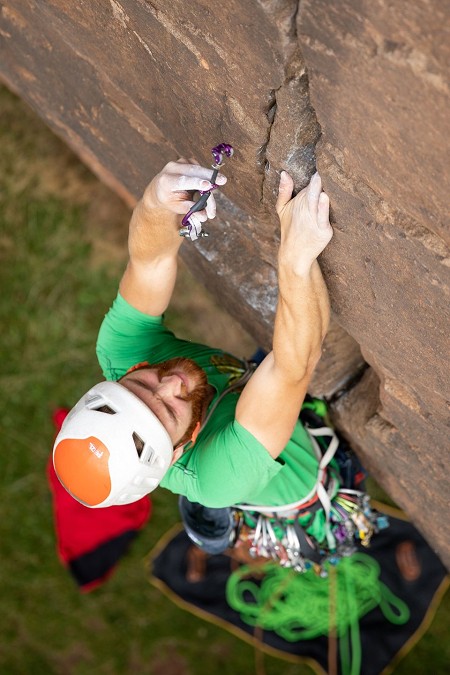




























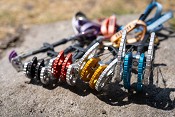
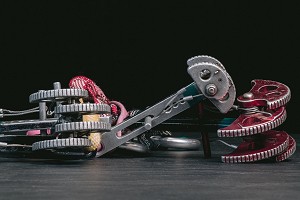

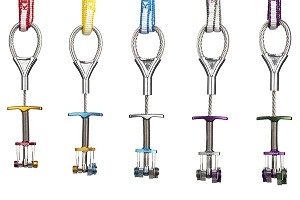
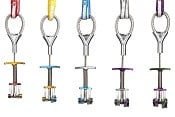
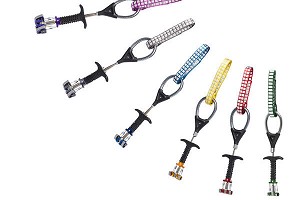

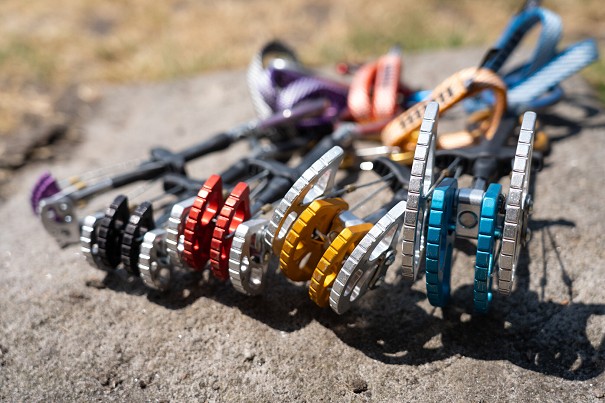

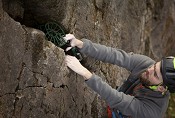
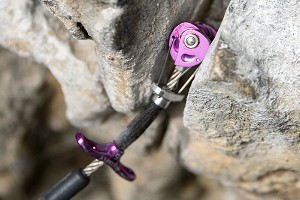


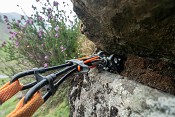
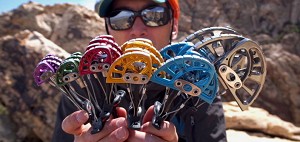

Comments
What are the thoughts on Alien Revolutions? I know the Evolutions were a bit of a dud but all of the quality issues seem to have been corrected with the Revolution cams.
Seeming good build quality, options of extendable and non extendable slings, I've use them alongside my Totem Basics for a few years now and rate them both. If branding was removed from Totem basics, Dragonflys and Revolutions (the three brands I'd look to buy) is there much in it?
I love my aliens. Got two of the very old ones and one new, yellow, one. So handy. The cam lobe material is just the right hardness to allow the rock to bite into them.
have tried some Metolius micro cams but they didn’t inspire me with confidence.
i did have a red Alien but had to retire it after I fell 50 ft onto it. It was pretty trashed after that. Sorry to see it go but I’m still here.
never tried Totem cams. They look a bit complicated. Simple is good.
Hi Mike,
Funnily enough I had several Alien Evolution cams, with the key word being 'had', as all of them have subsequently fallen apart. As such, my confidence was knocked in the brand somewhat.
Desperation drove me back to them when my Black Alien finally died and I've been using a Black Revolution Cam ever since, which is - as you say - a significant improvement. It's still holding together well after what must now be a few years of use (although it's worth nothing that it's not a cam I use all that often). Sadly we weren't able to get a set to review, as it'd have been good to include them. Perhaps we'll try again, as it'd be interesting to see how they compare.
When it comes to whether there's much in it I'm probably not the best person to ask, as I wasn't heavily involved within the Group Test; however, when it comes to what's on my own rack - and what I've used from the products we had on review - I am still eternally grateful for owning a set of Totem Basics. They are, without doubt, my micro-cam of choice. The only exception to this is on polished Peak Limestone, where I prefer to use the standard Totem Cams - albeit in their smallest sizes.
In short: I really, really wish that Totem still made the Basic...
Rob, off topic, but which sizes of Totem are you using on Peak Lime? Are they that much better than than Dragonflies/Dragons/C4s?
Any info on the alloy used for all the different cam lobes? It's mentioned as important in the Dragonfly section, then not mentioned again?